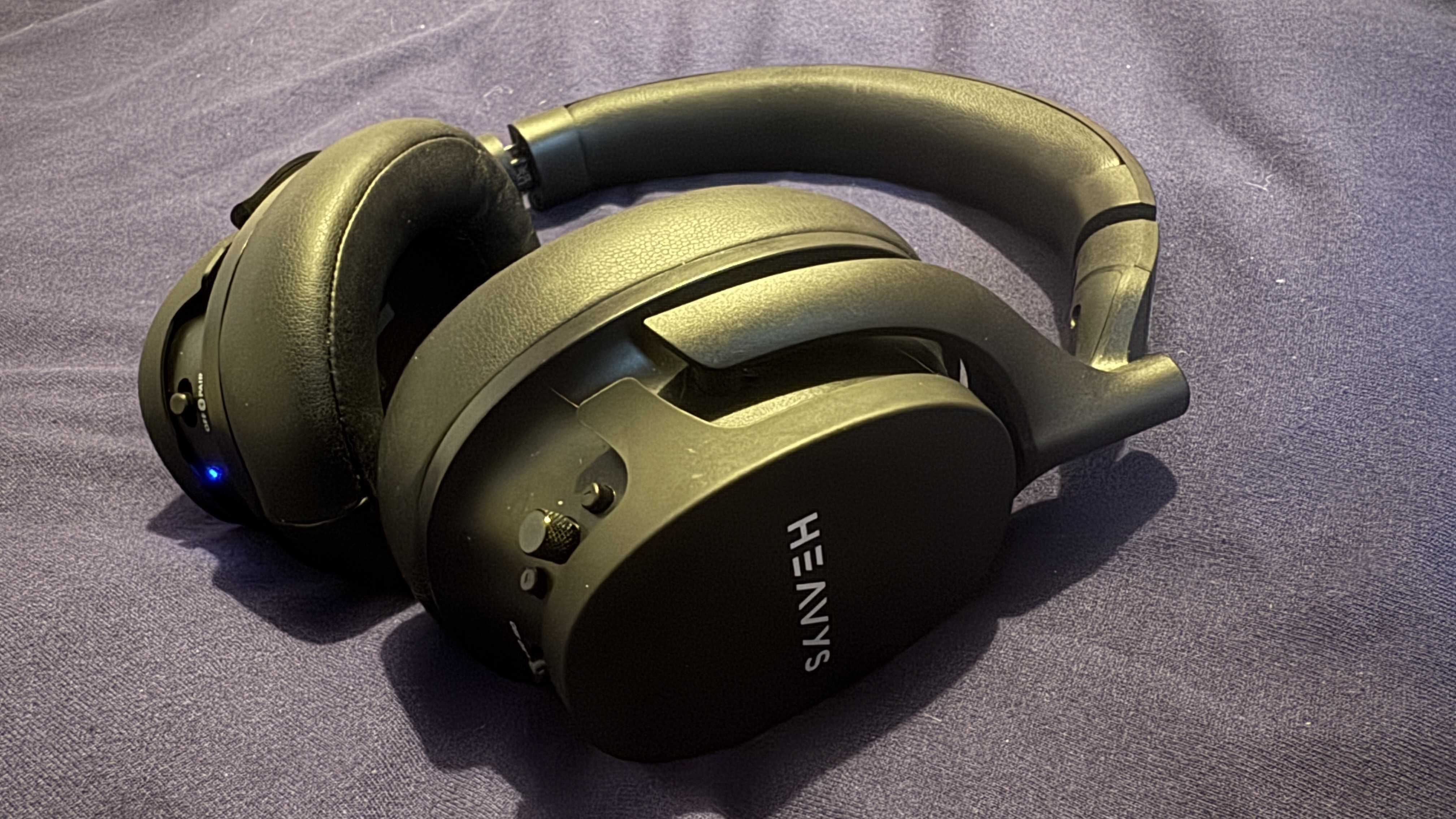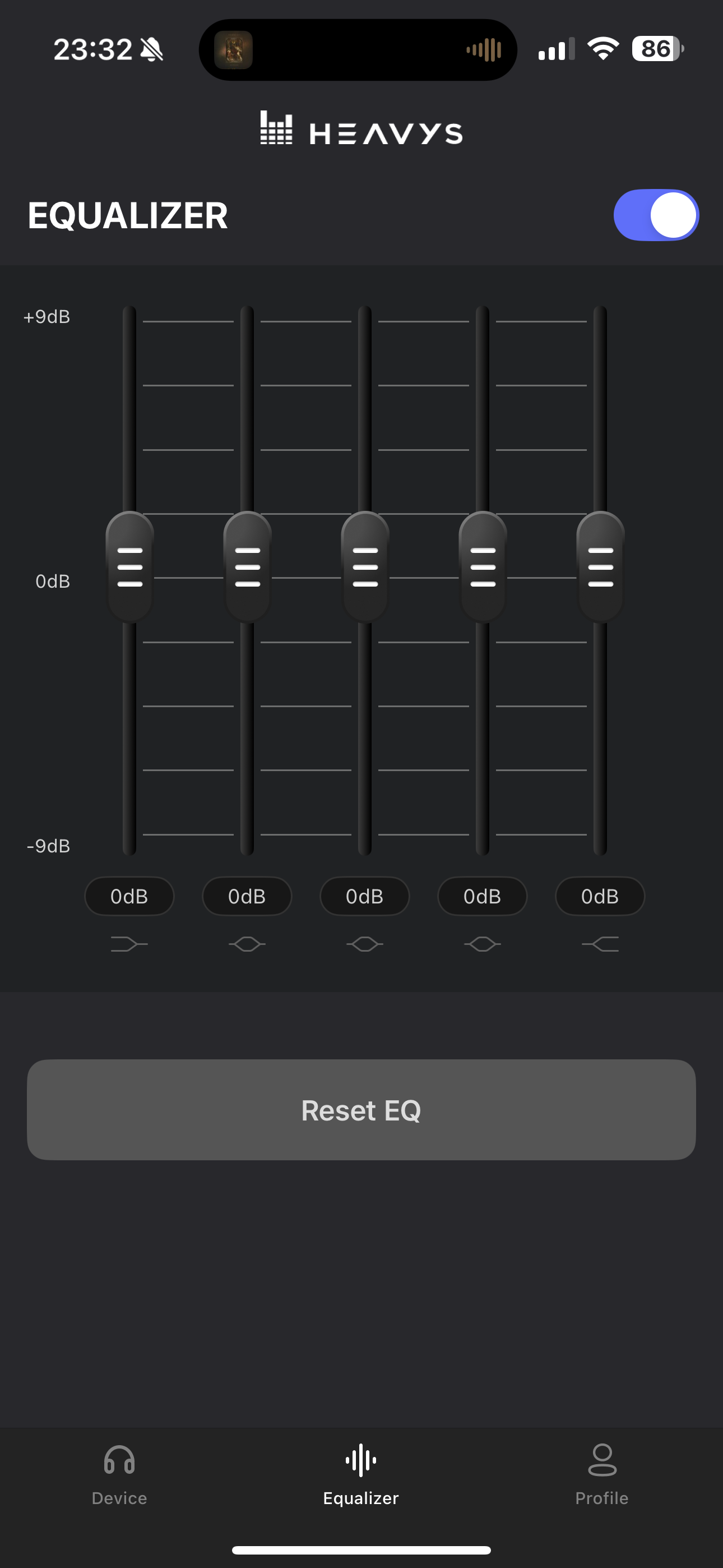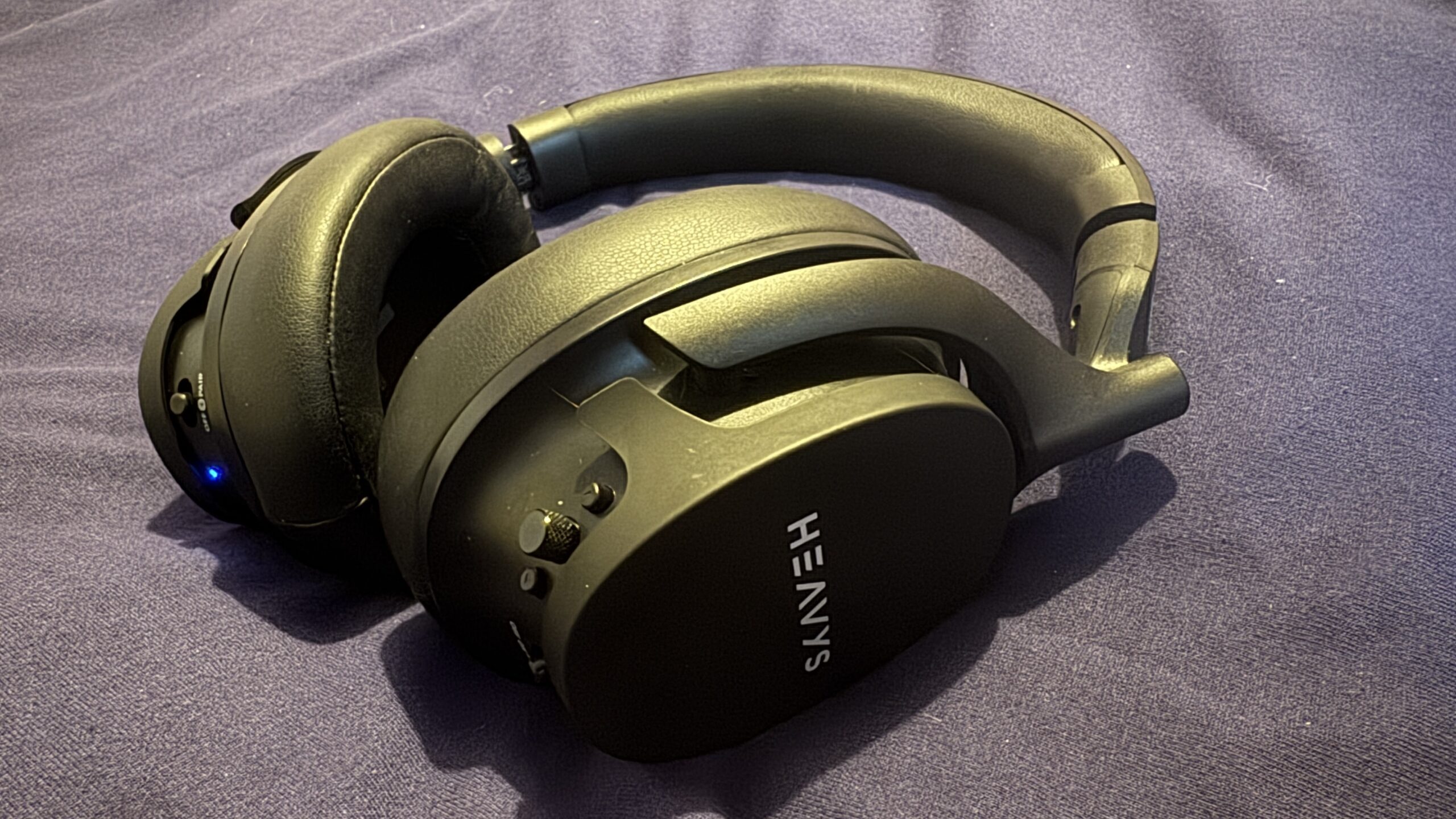I was skeptical when Heavys headphones (not a typo, there’s an ‘s’ on there) started making the rounds on social media. As a lifelong metal fan, there’s nothing in this world I enjoy more than guttural vocals, down tuned guitars, bone-crushing bass and precision percussion performed at 300 BPM. Could an audio company have the secret sauce to accurately translate the live experience of extreme metal shows to headphones?
Enter the Heavys H1H headphones, which have been available for around three years now but remain largely unrivalled in this particular space. You’ll likely know the name if you’ve spent any amount of time scrolling through social media while blasting all manner of extreme and loud music from your smartphone.
The company has had clever collaborations (through changeable ear cup plates, called Shells) with all-star bands such as Cannibal Corpse, Opeth, Carnifex, Paradise Lost, Blood Incantation, Lamb of God, Trivium, Dark Funeral, Katatonia, and Morbid Angel, but do the cans do the bands justice? That’s what I’ve spent the last few months (and hundreds of listening hours) trying to ascertain.
Dialling up to 11
Before I discuss the audio performance of the Heavys H1H, it’s essential to examine the technical specifications of these headphones and how they compare to some of the best headphones on the market. It begins with the vision of one man, Axel Grell (Heavy’s co-founder and CTO), who was previously Sennheiser’s Chief Headphone Engineer for nearly 30 years – and after that, tuned the very good (if much more demure) Montblanc MTB 03 earbuds and the excellent Grell Audio TWS/1.
So, the man knows a thing or two about developing headphones. And that’s reflected in the build quality of the Heavys H1H, as well as in their technical makeup. There are a total of eight audio drivers (four on each side), with each earpiece featuring two low- to midrange 38mm speakers and two high-frequency tweeters. The frequency range is relatively broad, going from 5 Hz to 46 kHz, for a Total Harmonic Distortion (THD) level of 100 dB. Compare this to the Sony WH-1000XM6, a leading model with a frequency range of 20Hz to 20kHz, and despite the fact that human ears can only hear frequencies of 20Hz to 20kHz, there is a notable disparity in audio quality that can be accurately reproduced between the two.
A wider frequency response from audio drivers (generally) ensures higher crispness and clarity through the leading edges of notes, reduced distortion, and better overall sound quality, all of which is particularly important for extreme sub-genres of metal music. With proper audio mixing, you will (theoretically) be able to hear the attack of the symbols and double-kicks breaking through the mix against the bass licks in the low-end and to hear them accurately layered beneath the contrasting higher frequency instrumentation (such as lead and rhythm guitars) without anything being lost or coming across muddy.
It’s not especially common for headphones (rather than IEMs) to have separate tweeters alongside traditional audio drivers built onto each ear cup, and that’s where the Heavys H1H stand out. It’s remarkable from a design perspective, as the tweeters themselves are positioned on the sides of the cups (instead of being concentrically implemented with the 38mm drivers), which (should) help to elevate the higher sounds in the mix. In essence, the hardware’s all here for trebles, mids, and bass to mix delicately – if well integrated.
I demand you in the name of the horns

I didn’t need much of an excuse to throw a range of diverse extreme metal tracks at the Heavys H1H for a first impression, so I started off with some Swedish death metal to see what they could do. Playing Bloodbath’s So You Die and Eaten demonstrated what’s so good about having both tweeters and compression drivers for each ear, as the guitar work and bass playing of Anders Nyström and Jonas Renkse came through wonderfully in the low end and midrange respectively. As for the vocal performances, both Mikael Åkerfeldt’s and Peter Tägtgren’s growls were delivered with brutal fidelity, never coming through washed out in the background.
Not too surprising given the higher production values of Swedish death metal of that era, but what about music that’s produced more… liberally? That’s where we get into the icy realms of black metal, which is (usually) made to be as abrasive and “raw” as possible. With that said, spinning the likes of On Horns Impaled by Watain, Leviathan’s Liar of Nazareth, and Darkthrone’s Quintessence was illuminating. Chiefly for the fact that the Heavys H1H’s EQ wasn’t compacting the “wall of sound” out completely by default, as the reverb-soaked drums, higher vocals, and razor-thin guitars were incredibly sharp.
You can listen to most metal music just fine from your everyday pair of Apple AirPods or something more wallet-friendly, like the 1More Sonoflow Pro HQ51 headphones, but it takes a special pair of cans to be able to elevate metal’s fringe sounds so well. Fundamentally, it’ll depend on the kinds of metal that you enjoy listening to; that’ll dictate whether you even need a pair of headphones with this level of tech involved, that can get as loud as this without losing clarity. Your everyday squeaky clean radio rock or ultra-polished heavy metal album won’t benefit as much, but that’s also not whom the company is necessarily targeting either.
The weight of the world on you

If there’s one thing that’s true of the Heavys H1H, it is that they’re named aptly. At a weighty 410g, these are easily the heaviest headphones I’ve ever worn, but they are remarkably comfortable, stay in place well when head-banging along (yes, I tested it), and are incredibly well-made. For $270 / £245, they do punch above their weight in terms of build and audio quality, even compared to some of the flagship headphones and headsets I’ve used in the past, which was a real surprise.
As someone who works out and walks often, I’ve found that the Heavys H1H headphones genuinely feel as though they disappear over time. Whether I’m trekking around rural Ireland on foot or exercising, they stayed in place on my head without pinching my ears, hurting my neck, or letting their presence be known, and that’s ideal when you listen to as much heavy metal music as I do in a single day. It’s something to get used to, but it made a sizeable difference when I returned to my previous daily driver headphones, the Sony WH-CH720N, for comparison’s sake.
Despite the branding and the gruff metal vocalist screaming in your ear when you do anything, such as connect via Bluetooth or achieve the maximum volume, there’s a level of subtlety and classiness to the H1H headphones. Decked out in black-on-black, with intuitive controls on the rear of the two cups, these are cans that you could wear anywhere without attracting undue attention, as if you were out for a walk in one of the best wireless headphones. Understated is always better in cases like this, but you can add a touch of flair via the Shells to better represent your favorite band if you choose; I’m hoping they’ll collaborate with Imperial Triumphant, Insomnium, In Flames, Scar Symmetry, and Behemoth in the near future, personally.
Punish My Heaven

I’ve been listening to extreme metal for over 15 years and have seen many hundreds (potentially thousands) of bands live in that period at gigs and festivals… without ear protection. Yes, I was young and naive enough to think that if I got in the mosh pits close to the front of the stages at Bloodstock, Incineration, and Damnation Festival, my hearing would never suffer. But that hasn’t been the case. I’ve had more ear canal cleanings than I care to remember, and I have become skilled at watching people’s mouths when they speak to me; otherwise, navigating some situations can be challenging.
Entirely self-inflicted, sure, but still an ongoing problem in my life. Usually, I have to have headphones at maximum volume just to make everything out; however, thanks to the clarity of the eight total drivers and the high-frequency range of the Heavys H1H, that’s no longer the case. I can listen at a safe volume for extended periods without worrying that I’m further damaging my already compromised hearing, which is something I greatly appreciate.
The company claims that the Heavys H1H are the “world’s first headphones to mimic live sound environments”, and I believe it. The vibrancy and warmth afforded by the drivers and tweeters do an excellent job of making me feel like I’m in the crowd. Just don’t be like me: wear adequate ear protection if you play metal music or go to shows, because it can (and will) happen to you, too.
All said and done, the Heavys H1H have genuinely improved how I listen to the music that gets me through my day-to-day life; they sound balanced while appropriately balancing the low end without muddiness or distortion and letting the higher ranges accurately sing in a way that I’ve not gotten from any other headphones in the past. Similarly, I don’t need to crank them to the maximum to do myself further harm to enjoy them, and they’re well-built enough to (hopefully) last a long time. They won’t be for everyone, but then they’re also not trying to be.
Whether you want to throw on some Slayer, kick back with a bit of Mgła, or go all-out with some Devourment, Vomitory, or Suffocation, the Heavys H1H are more than up to the task to go loud. For everyone else, they may be a little overkill.
